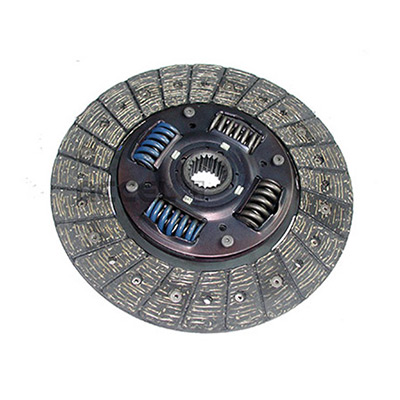- Arabic
- French
- Russian
- Spanish
- Portuguese
- Turkish
- Armenian
- English
- Albanian
- Amharic
- Azerbaijani
- Basque
- Belarusian
- Bengali
- Bosnian
- Bulgarian
- Catalan
- Cebuano
- Corsican
- Croatian
- Czech
- Danish
- Dutch
- Afrikaans
- Esperanto
- Estonian
- Finnish
- Frisian
- Galician
- Georgian
- German
- Greek
- Gujarati
- Haitian Creole
- hausa
- hawaiian
- Hebrew
- Hindi
- Miao
- Hungarian
- Icelandic
- igbo
- Indonesian
- irish
- Italian
- Japanese
- Javanese
- Kannada
- kazakh
- Khmer
- Rwandese
- Korean
- Kurdish
- Kyrgyz
- Lao
- Latin
- Latvian
- Lithuanian
- Luxembourgish
- Macedonian
- Malgashi
- Malay
- Malayalam
- Maltese
- Maori
- Marathi
- Mongolian
- Myanmar
- Nepali
- Norwegian
- Norwegian
- Occitan
- Pashto
- Persian
- Polish
- Punjabi
- Romanian
- Samoan
- Scottish Gaelic
- Serbian
- Sesotho
- Shona
- Sindhi
- Sinhala
- Slovak
- Slovenian
- Somali
- Sundanese
- Swahili
- Swedish
- Tagalog
- Tajik
- Tamil
- Tatar
- Telugu
- Thai
- Turkmen
- Ukrainian
- Urdu
- Uighur
- Uzbek
- Vietnamese
- Welsh
- Bantu
- Yiddish
- Yoruba
- Zulu
Дек . 24, 2024 06:54 Back to list
Understanding Timing Belts and Alternator Belts for Your Vehicle's Performance
Understanding Timing Belts and Alternator Belts in Cars
In the intricate world of automotive engineering, the timing belt and alternator belt serve crucial roles in the overall functionality of a vehicle. Although both belts are essential for the operation of a car’s engine, they function differently and serve unique purposes. Understanding the differences between these two types of belts, their significance, and maintenance can enhance vehicle longevity and performance.
What is a Timing Belt?
The timing belt is a critical component in an engine, primarily responsible for synchronizing the rotation of the crankshaft and the camshaft. This synchronization is vital for ensuring that the engine's valves open and close at the proper times during each cylinder’s intake and exhaust strokes. Usually made from a durable rubber material reinforced with fibers for strength, timing belts have specific teeth that grip the pulleys to prevent slipping.
Typically, timing belts are found in interference engines, where the pistons and valves occupy the same space in the cylinder. If the timing belt fails, it can lead to severe engine damage since the pistons may collide with the open valves. Therefore, manufacturers often recommend periodic replacement of the timing belt, usually between 60,000 and 100,000 miles, depending on the vehicle.
What is an Alternator Belt?
On the other hand, the alternator belt, also known as the serpentine belt, is responsible for driving multiple accessories in the engine, including the alternator, power steering pump, air conditioning compressor, and sometimes the water pump. The alternator belt is also typically made from rubber but does not have teeth like the timing belt. This belt is responsible for transferring power from the crankshaft to these components, ensuring they operate smoothly and effectively.
Unlike the timing belt, the alternator belt does not need to maintain precise timing between engine components, which means its failure typically impacts convenience rather than engine integrity. A worn or broken alternator belt can lead to issues such as a dead battery (since the alternator wouldn’t charge it), difficulty steering (if the power steering pump is impacted), or a lack of air conditioning. Generally, the alternator belt requires inspection and potential replacement at intervals ranging from 50,000 to 100,000 miles, depending on the type of belt and driving conditions.
timing belt for car\/timing belt and alternator belt

Maintenance and Replacement
Both belts are essential, but they require different maintenance approaches. Regularly inspecting the timing belt for signs of wear, such as cracks, frays, or glazing, is crucial. If any signs of degradation are present, immediate replacement is recommended to avoid catastrophic engine damage.
The alternator belt should also be inspected for similar wear indicators. If squeaking or squealing noises are heard, it may suggest that the belt is loose or beginning to wear out. In some cases, the alternator belt's tension can be adjusted to prolong its lifespan, but eventual replacement is necessary.
Signs of Failure
Understanding the signs of potential belt failure is key in prevention. For the timing belt, unusual engine noises, engine misfires, or a check engine light can indicate issues. If a timing belt breaks while driving, it can lead to a sudden stop, necessitating expensive repairs due to engine damage.
For the alternator belt, warning signs include electrical issues (dimming lights, gain trouble’s starting) and unusual noises when the engine is running. Paying attention to these signs can often prevent being stranded due to a belt failure.
Conclusion
In summary, both the timing belt and alternator belt are pivotal to the health and efficiency of a vehicle. Understanding their distinct functions and maintenance needs can help owners take proactive measures to ensure their vehicles run smoothly. Regular inspections and timely replacements will not only extend the life of these components but also enhance overall vehicle performance, ensuring a safer driving experience. Always refer to your vehicle’s owner’s manual for specific recommendations on maintenance intervals to keep your car in top condition.
-
Korean Auto Parts Timing Belt 24312-37500 For Hyundai/Kia
NewsMar.07,2025
-
7PK2300 90916-T2024 RIBBED BELT POLY V BELT PK BELT
NewsMar.07,2025
-
Chinese Auto Belt Factory 310-2M-22 For BMW/Mercedes-Benz
NewsMar.07,2025
-
Chinese Auto Belt Factory 310-2M-22 For BMW/Mercedes-Benz
NewsMar.07,2025
-
90916-02660 PK Belt 6PK1680 For Toyota
NewsMar.07,2025
-
drive belt serpentine belt
NewsMar.07,2025

